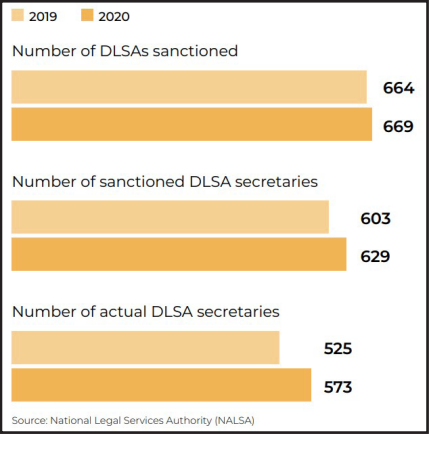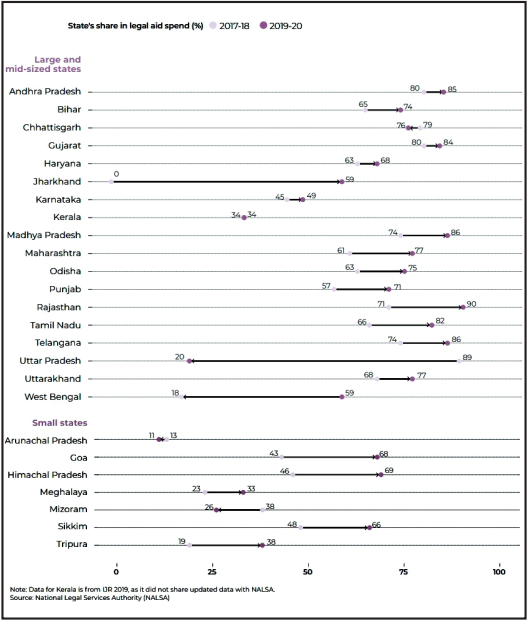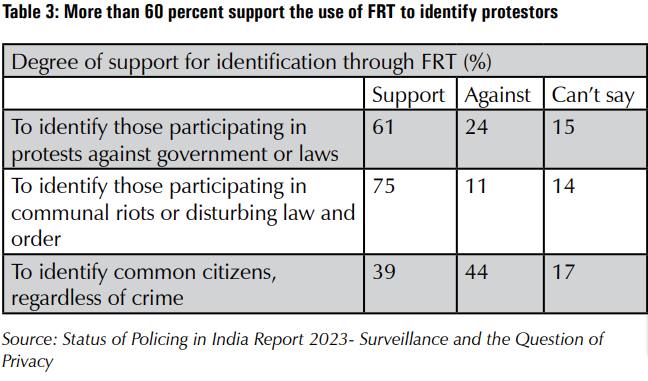A Mirage called Legal Aid
Access to Justice Needs to Scale Up
The Capacity Deficits

Legal aid is arguably one of the most neglected pillars of the justice system, perhaps owing to the fact that a law constituting this body, the Legal Services Authorities Act, came into effect only in 1987. Despite almost 80 percent of the Indian population being eligible for free legal aid, these institutions often suffer from lack of infrastructure, uneven human resource distribution, poor utilisation of funds, to name a few problems. None of the states and UTs were able to use the entire NALSA budget allocation, and in 26 states and UTs one legal aid clinic caters to more than six villages. The per-capita spend by the centre on legal aid in 2019-20 is just Re 1.05.
In the IJR series, the purpose is to study the capacity of the criminal justice system to be able to deliver justice. To make this assessment, we look at each pillar through these thematic lenses: human resources, infrastructure, diversity, workload and budgets. The reports also analyse the progress made by the states in some of these indicators over the years, particularly those which have clear benchmarks set out by the states themselves. The states are then ranked against these benchmarks in comparison to one another to track the relative capacity of each pillar in the state to be able to perform its functions effectively.

A total of 15 indicators were analysed to study the capacity of legal aid authorities across states. The analysis showed that as of 2020, among the large and mid-sized states, Maharashtra had the highest rank, while Uttar Pradesh ranked the lowest. Amongst the 25 small, mid-sized and large states that were ranked, nine showed overall improvement in legal aid capacity since 2019, while 12 states showed a downward trend.
Bihar registered the largest jump of 14 spots between 2019 and 2020—from 16th to 2nd position in 2020. Jharkhand similarly improved from the 14th to the 4th spot. Common contributions include improving infrastructure, National Legal Services Authority (NALSA) fund utilisation and an increased share of women panel lawyer.
In this chapter, we look at some of the key findings of IJR 2020 under the legal aid pillar
Diversity
As of March 2020, 145 DLSA secretaries or 28 per cent were women; roughly one out of every four. Tripura (66 percent) and Andhra Pradesh (58 percent) had the highest share of women amongst DLSA secretaries. The states in the Northeast, which do not have full-time secretaries, have women judicial officers. Illustratively, Mizoram with no full-time secretaries had five female judicial officers in that post.

Infrastructure
Infrastructure has been mapped in terms of both front offices and legal services clinics. A legal aid clinic can be understood as a ‘single window facility’ offering legal services to those who need it. While the number or geographical location has not been specified, it is clear that clinics need to be set up for easy access. The suggested norm is for one legal aid clinic to serve no more than six villages.
In March 2020, there were 14,159 legal aid clinics for 597,617 villages or on average one clinic for every 42 villages. Of course these are not evenly spread across the entire geography of the country and their outreach varies widely. Between 2017 and 2019, twenty-two states/UTs improved the number of clinics available. Yet, as of March 2020, only three states met the norm. Kerala, with an average of about two villages per clinic, presently has the best coverage amongst large and mid-sized states. By contrast, in 2017, in Uttar Pradesh, a single clinic covered 1,603 villages. In 2020 this dropped by 68 percent to 520 villages per clinic, but the state still fares the worst on this metric.
Every jail too must have a legal services clinic. As of March 2020, seventeen states/ UTs meet this criterion. In some states, the number of clinics is higher than the number of prisons because several prisons have individual clinics for each district from where the prisoners’ cases are being tried. Amongst large and mid-sized states, Gujarat has the most clinics—49 across 30 prisons—while Punjab has 26 clinics for its 24 prisons. Among small states, Arunachal Pradesh, Goa, Meghalaya and Sikkim either meet or even exceed the required number of prison clinics.
To enable easy access to legal services and information, every legal services institution is required to have a ‘front office’. A ‘front office’ is a ‘one stop centre for legal aid seekers to receive aid, advice and all information about their cases and all legal services provided by the LSI’. Four states/ UTs had a front office in all their legal services institutions (LSIs). Nagaland had 13 front offices across 13 LSIs, as did Delhi. Tamil Nadu, Andhra Pradesh and Telangana had a coverage of 99 percent.
Workload
Permanent Lok Adalats (PLAs) are intended to settle public utility disputes. Every state is mandated by law to establish a PLA. Currently, West Bengal remains the only large and mid-sized state that has no Permanent Lok Adalat. In 2019–20, these Adalats settled 1,17,850 cases compared to over 1.24 lakh cases in 2017–18.
Budget
As of 2019–20, unlike a year ago, all states have contributed towards legal services expenditure, and 11 states have increased their share. The increased willingness to contribute more towards legal aid suggests a mounting recognition of the value of this service. In seven states, this share has moved to upwards of 80 percent; in IJR 2019, only Andhra Pradesh, Gujarat and Uttar Pradesh contributed this amount. With more funds in hand states’ utilisation has also gone up.
During 2020-21, there has been a significant improvement in the ability to utilise NALSA funds. Nationally, utilisation improved from 70.7 percent to 94.2 percent, while for large and mid-sized states, it moved from 77.13 percent to 96.07 percent - with seven of them utilising at least 90 per cent. Uttar Pradesh utilised nearly 100 percent. Meghalaya was the only state to have used only roughly onefourth of the funds allocated. However, NALSA’s own budget fell from Rs. 150 Cr in 2018 - 2019 to Rs. 100 Cr in 2020 – 2021.
A state’s legal aid spend comprises what it gets from the centre (via NALSA) and what it provides. In the last two years, 14 of the 18 large and mid-sized states and five of seven small states have increased their contribution to their legal aid spend.
Overall Ranking - Legal Aid
Since 2019, some of the eighteen states that have a population of over 10 million have significantly improved their capacity to deliver legal aid and have gone up in ranking.

Only Maharashtra (first from fifth), Punjab (remaining third) and Haryana (fifth from second) have retained their positions among the top five states.
NEXT »



